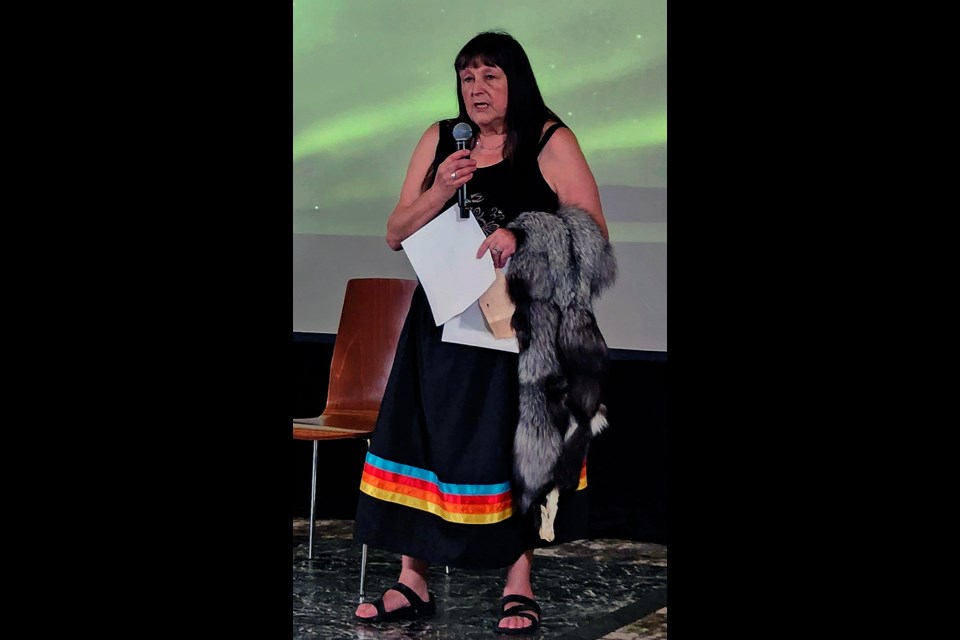SASKATOON — Pat Bruderer is the carrier of an ancient art form called birchbark biting. It almost disappeared during cultural genocide experienced by Indigenous Peoples during colonization.
Birchbark biting is an art form where artists bite the thin and flexible bark of birch trees using eyeteeth or cuspids to create intricate designs used as patterns for quill work and other art forms. Indigenous artists also use birchbark biting to entertain through storytelling.
Bruderer is holding an exhibit at Wanuskewin Heritage Park’s West Gallery featuring biting that is practiced by Algonquian and Anishinaabeg people (Odawa, Ojibwe and Potawatomi) and Cree.
Her exhibit, Biting Back: Our Cultural Resilience, opened July 30 with a runway show of her clothing designs and jewelry as well as a ballet performance by her niece Mikaila Meehan and her grandson Jordee Sinclair. It will run until Oct. 4.
Bruderer, who is a member of the Peter Ballantyne Cree Nation who is Assin’skowitiniwak (Rocky Cree), said that she is a self-taught birchbark biting artist and learned about the almost lost artform after seeing Angelique Merasty’s work.
“It is like a lot of our things have gotten lost because of colonization and residential schools,” Bruderer told SASKTODAY.
Indigenous children were forcibly taken from their communities by the government to attend residential schools and assimilate into Western culture. They were not allowed to speak their language or practise their own culture and if caught doing so, they were punished.
However, Bruderer said that she was pleased that awareness of the issue has been discussed by survivors as elders, knowledge keepers and artists like her have been slowly bringing back parts of their culture for the next generation to learn.
“I already passed it [birchbark biting] to two generations in my family to all my children and grandchildren,” she said.
“We’ve been working with this [exhibit] for a year, but COVID delayed us. I was going to work with people in Manitoba, but I ended up working with people in B.C. A lot of the people who helped me are family members,” added Bruderer.
The exhibit features 30 years of hard work by Bruderer in creating designs that were then put into clothing, jewelry and other accessories like a handbag. She had also incorporated her designs into works that are laser etched into metal and parfleche.
She said that she wanted to show the beauty and uniqueness of the cultures and traditions of Indigenous people, hoping that visitors would learn more through her exhibit.
"When I say Biting Back: Our Cultural Resilience, we look at the stories in the past and we bring it forward. My show is about the cultural resilience that our ancestors had. Our people were already here for thousands of years. They predated the pyramids," she said.
Bruderer also shared a story of what her mother went through after getting lost in the Northern Canadian wilderness for nine days in 1944, battling for her life and conquering the brutal winter weather.
“She would walk at night and sleep during the day because she knew she would freeze to death if she slept at night. She used her traditional knowledge to survive and followed the caribou. She survived with no matches or food, in the winter in the barren land,” she said.
Bruderer was born and raised in Churchill, Man., and currently resides in British Columbia. She is active as a volunteer and continues to teach in First Nations communities and schools across the country the art of birch bark biting.



